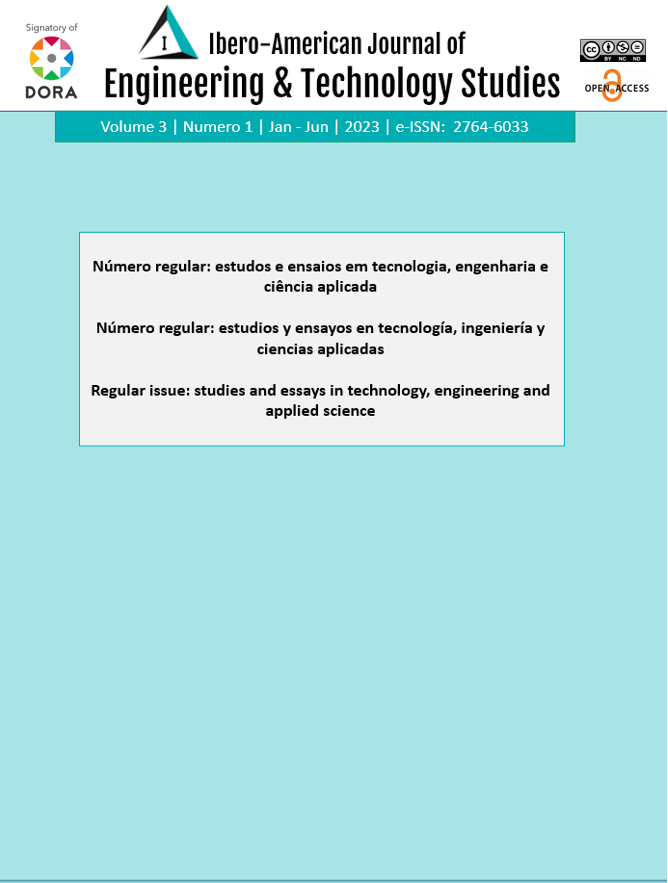Recuperación de tornillo sin fin para extracción de aceite de palmiste de la Palma Africana
DOI:
https://doi.org/10.56183/iberotecs.v3i1.588Palavras-chave:
Extracción, Aceite, Palma, Demanda, Producción.Resumo
The extraction of palm oil, has as its primary activity the massive production of oil, to improve the obtaining it is important to keep in mind the technologies that today are glimpsed worldwide, one of them is the endless screw, thanks to this improves performance in extraction processes in compliance with international regulations and standards. The current demand for the extraction of the palm kernel, becomes much more important in international markets, this is used as raw material for the production of biodiesel, which is a biofuel used for the generation of electricity and heat. It is also used in the production of animal feed, thanks to its high energy content per serving. In the field of the cosmetics industry, its use is wide thanks to the diversity of its derived products, one of them for the production of bath gels, lipsticks, shampoos, soaps, toothpastes, creams, among others. And no less important is the massive use in culinary art. In this work, processes and applications of palm kernel oil are discussed, as well as the use and importance of its use, especially emphasis is placed on the extraction processes we recommend, such as solvent extraction, preceded by cleaning and preparation of the palm kernel, and the extraction by mechanical pressure in one stage, both cold and conditioned, in addition to the advantages that each system presents.
Referências
Bonomie, M., & Reyes, M. (2012). Estrategia ambiental en el manejo de efluentes en la extracción de aceite de palma. Telos: Revista de Estudios Interdisciplinarios en Ciencias Sociales, 14(3), 323-332.
Carrasco, J. (1995). Extracción de aceite de palmiste: procesos. Revista Palmas. Vol. 16 Núm. Especial. Documento en línea. Disponible en: https://publicaciones.fedepalma.org/index.php/palmas/article/view/505/505
Hamblin, F. K. (1991). Extracción de aceite de palma y nuevos criterios de procesamiento. Palmas, 12(especial), 74-101.
Mora, O. L. (2003). Ácido láurico: componente bioactivo del aceite de palmiste. Palmas, 24(1), 79-83.
Pantzaris, T y Jaaffar, M. (2002). Propiedades y usos del aceite de palmiste. Palmas Vol. 23 No. 3, 2002. Documento en línea. Disponible en: https://publicaciones.fedepalma.org/index.php/palmas/article/view/925/925
Reinosa Pulido, D. C. (2009). Costos ambientales en el proceso de extracción del aceite de palma: Estudio de un caso. Revista Venezolana de Gerencia, 14(46), 228-247.
Rincón, S. M., & Martínez, D. M. (2009). Análisis de las propiedades del aceite de palma en el desarrollo de su industria. Palmas, 30(2), 11-24.
Tang Thin Sue (1992). Calidad actual del palmiste y del aceite de palmiste. Revista Palmas, Volumen 13 No. 4. Documento en línea. Disponible en: http://www.angelfire.com/co4/franciscodelgado/calidadpalmiste.pdf
UTP (2019). Manual de electrodos revestidos. Böhler Thyssen Soldaduras S.A. Documento en línea. Disponible en: https://www.acerosbohler.com/es/
Voestalpine (2019). Electrodos para soldar recubrimientos duros.
Voestalpine High Performance Metals del Perú S.A.Documento en línea. Disponible en: https://www.voestalpine.com/highperformancemetals/peru/es/home/productos-marcas/soldadurasespeciales/electrodos-para-soldar-recubrimientos-duros/.
Downloads
Publicado
Edição
Seção
Licença
Copyright (c) 2023 Jorge Daniel Mercado-Bautista, Violeta Elizabeth Reyes-Bone, Alejandro Javier Martínez-Peralta, Mayer Santiago Quiñonez-Alava , Carlos Humberto Reyes-Vera

Este trabalho está licenciado sob uma licença Creative Commons Attribution-NonCommercial-NoDerivatives 4.0 International License.


